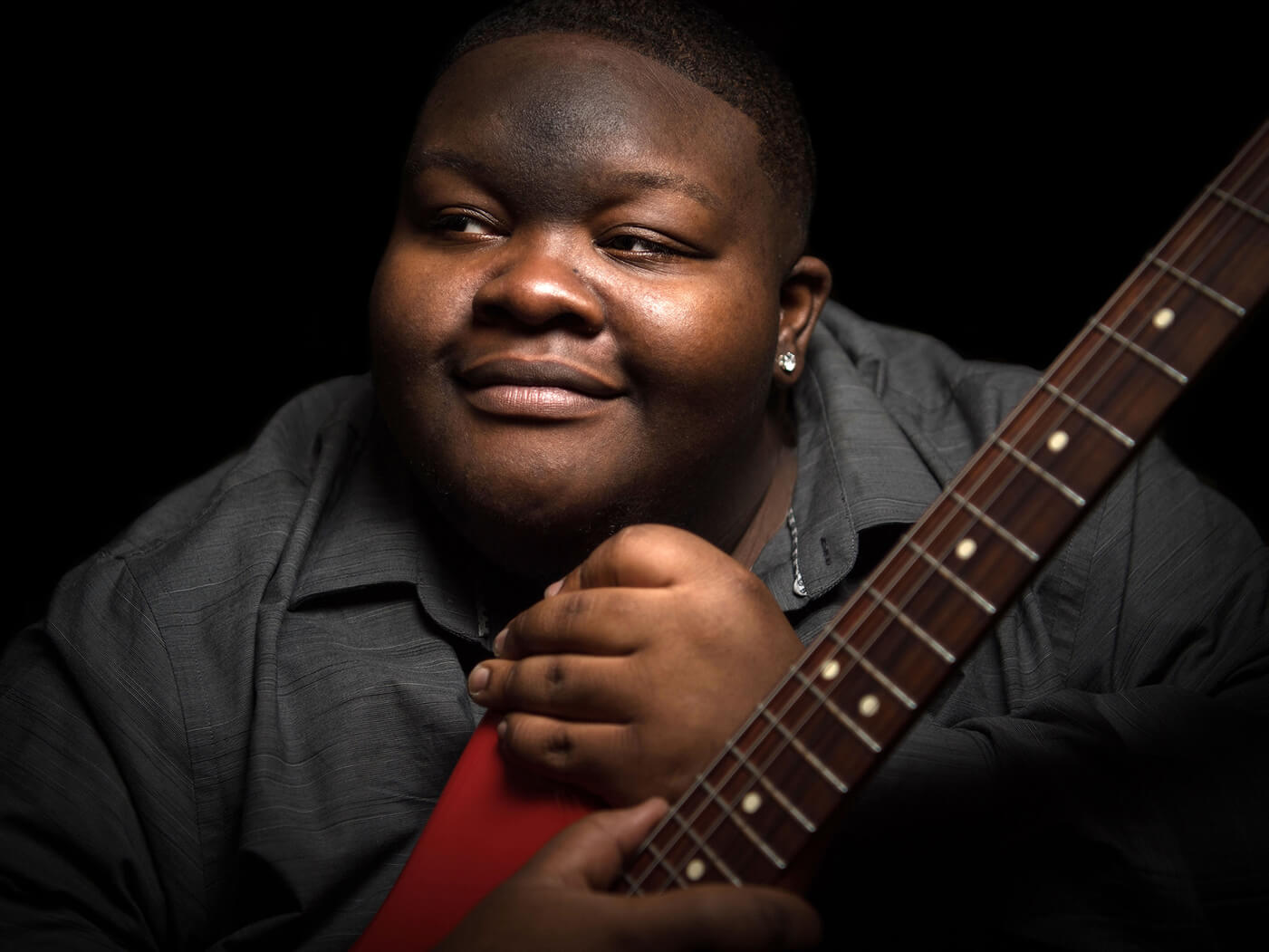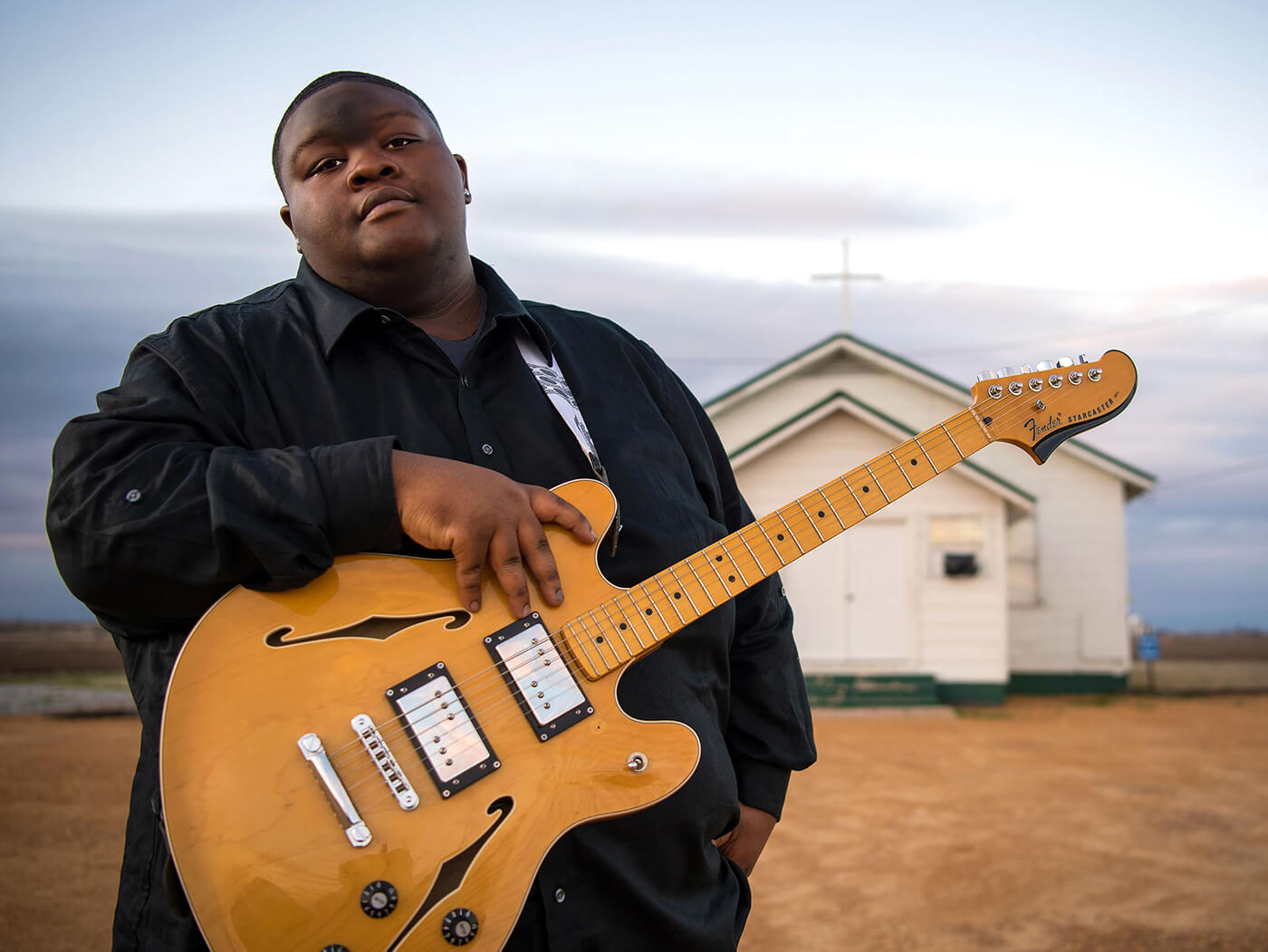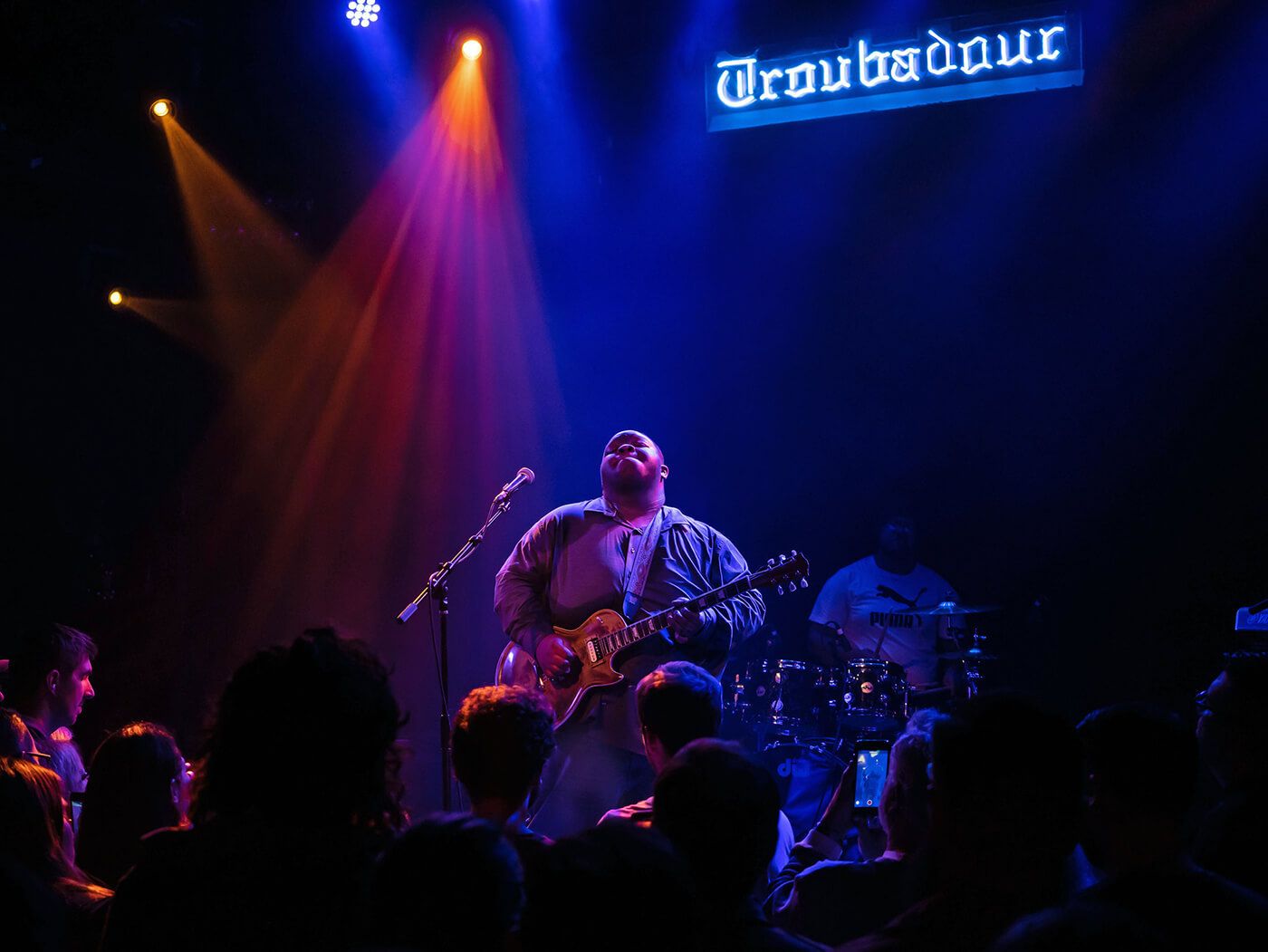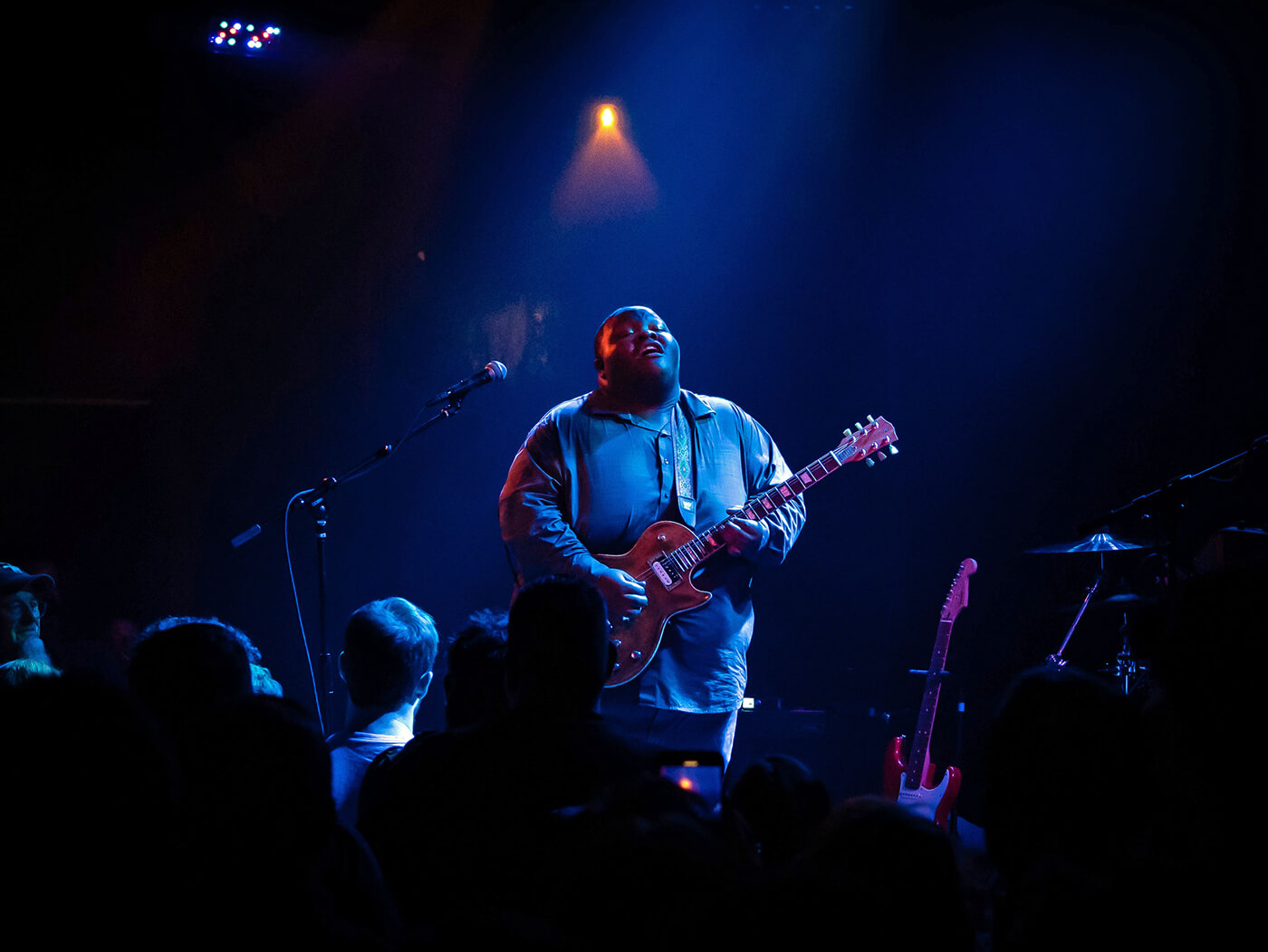All hail young blues aristocrat Christone ‘Kingfish’ Ingram
The 20-year-old guitar prodigy tells us how growing up in the birthplace of the blues makes him the perfect candidate for modernising the genre.
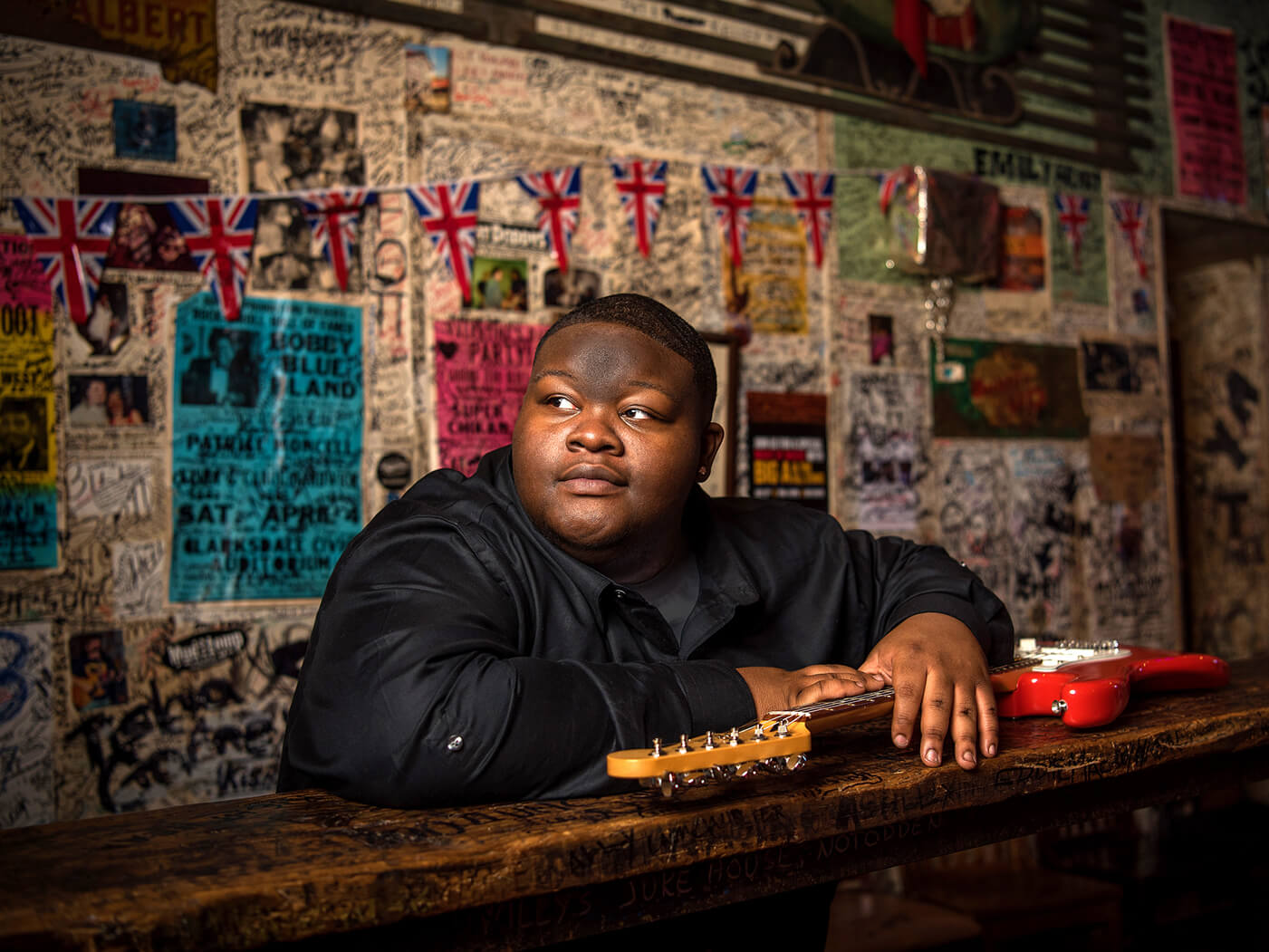
Image: Rory Doyle
Although the buzz is strong around 20-year-old blues artist Christone ‘Kingfish’ Ingram, it isn’t new. The Mississippi native has been turning heads as a singer, songwriter and guitarist for several years. So much so that he caught the attention of blues legend Buddy Guy in 2015, who believed in him enough to share stages and help fund his debut album, Kingfish.
Ingram’s passion for music began when he was a child. By the time he entered elementary school, he was playing drums and soon moved on to bass. His mother enrolled him into a music programme at the Delta Blues Museum, where he added guitar to his repertoire and started immersing himself in the blood-and-guts blues of Robert Johnson, Lightnin’ Hopkins and Muddy Waters.
After cutting his teeth at local festivals and bars – mind you, he played his first gig at 11 – the prodigious guitarist found himself on the sure path to stardom. And it happened like a whirlwind: he toured the US and several countries across the world, and even performed for Michelle Obama at the White House in 2014. All this, and he hadn’t even turned 18.
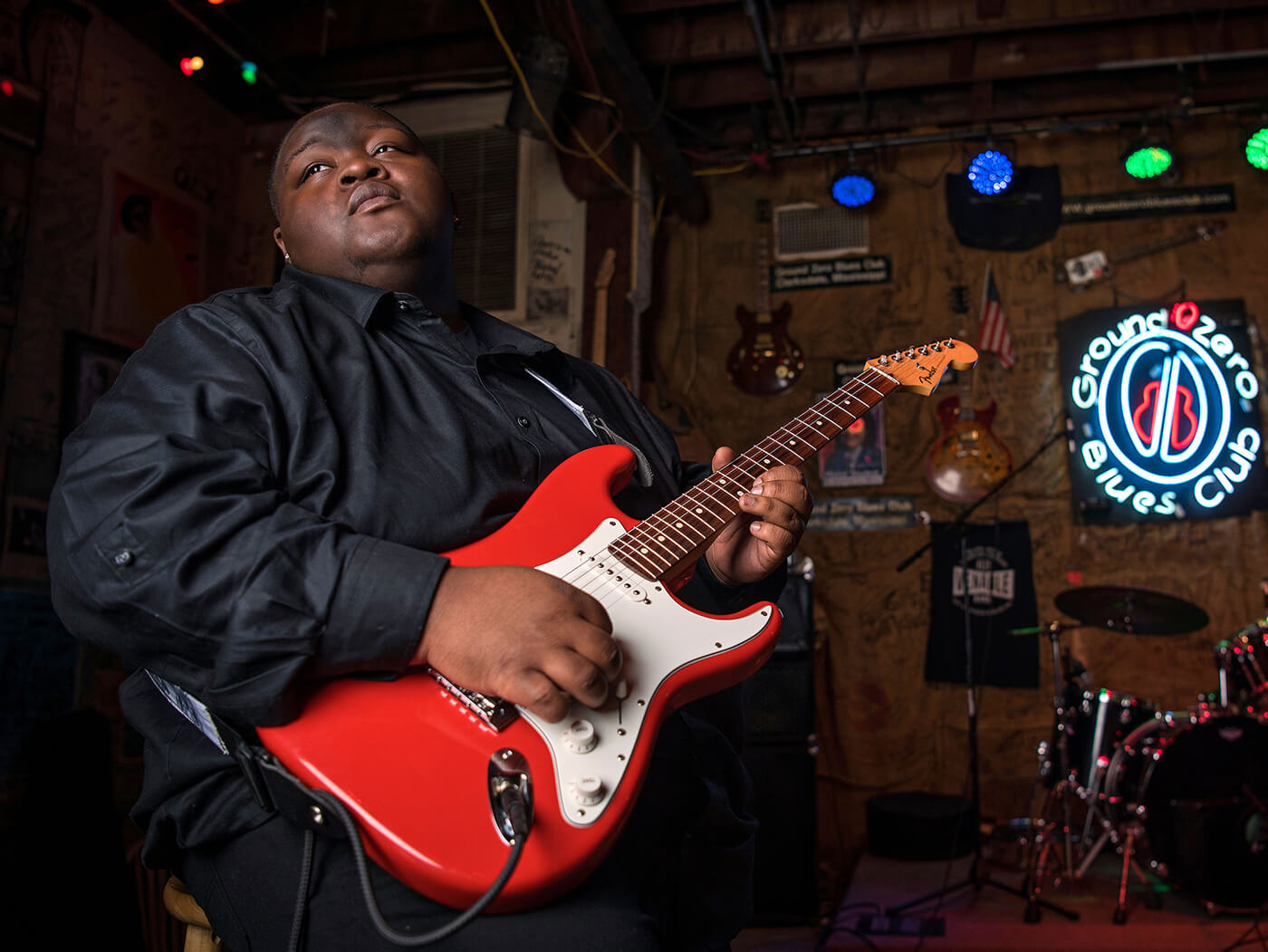
Today, Ingram maintains a heavy global tour schedule, bringing traditional blues music to hardcore fans while winning over young audiences by adding covers from his favourite artists. He was even featured front and centre in Fender’s campaign for the recently released Vintera range.
We caught up with Ingram to talk his love of Peavey amps, why he stopped shredding and what he looks for when shopping for a guitar.
Early days
There’s a great line in your bio: “I’m moving forward with one foot in the past.” Would you mind diving a bit deeper into what that means to you?
The tradition is always going to be there. That’s the root for everything. But I feel if you want to attract young people to the blues, how about mixing in some of the modern elements that we have, such as rap and a few other styles? Once we get them in, then we can show them the real deal and show them the history. That’s what I’m trying to do. I love all genres of music, and I want to keep this thing going but still attract a younger audience.
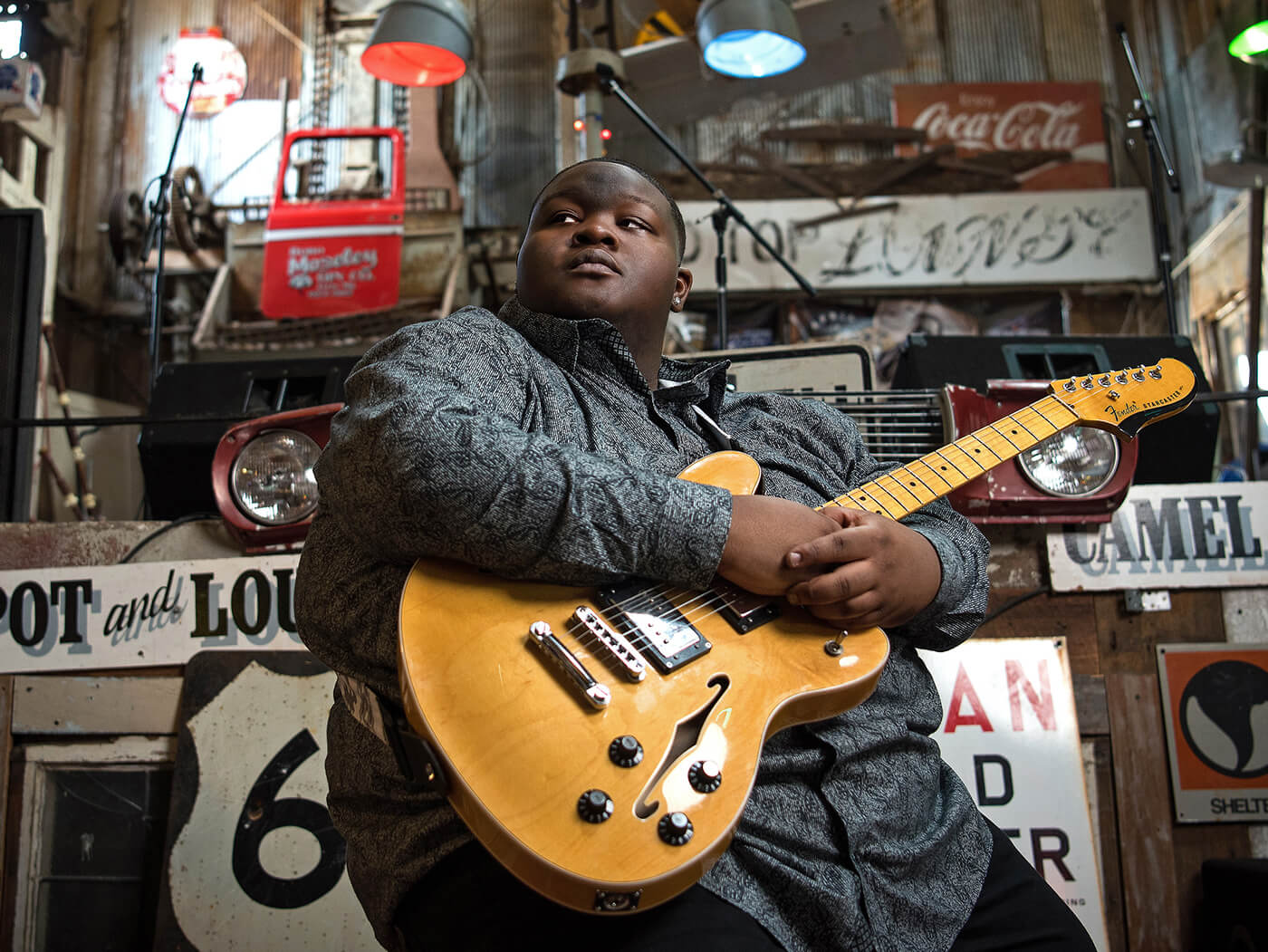
You started out on drums when you were very young, moved on to bass, and then to guitar. How did those rhythm instruments shape you as a guitarist?
When you play those instruments, such as bass and drums, it teaches you discipline and you have to have pocket. So I incorporate that in my rhythm guitar-playing. When I’m playing funk riffs, I try to keep that pocket and keep that groove on without being too fancy.
How has your playing developed over the years?
My singing has grown, for sure, because I have more confidence in my voice. It’s bass-ier now and more smooth. I’m not a shredder like I used to be. I play more tastefully now and my musical knowledge is growing every day. I’m learning theory, so everything is coming in better than it had been three years ago.
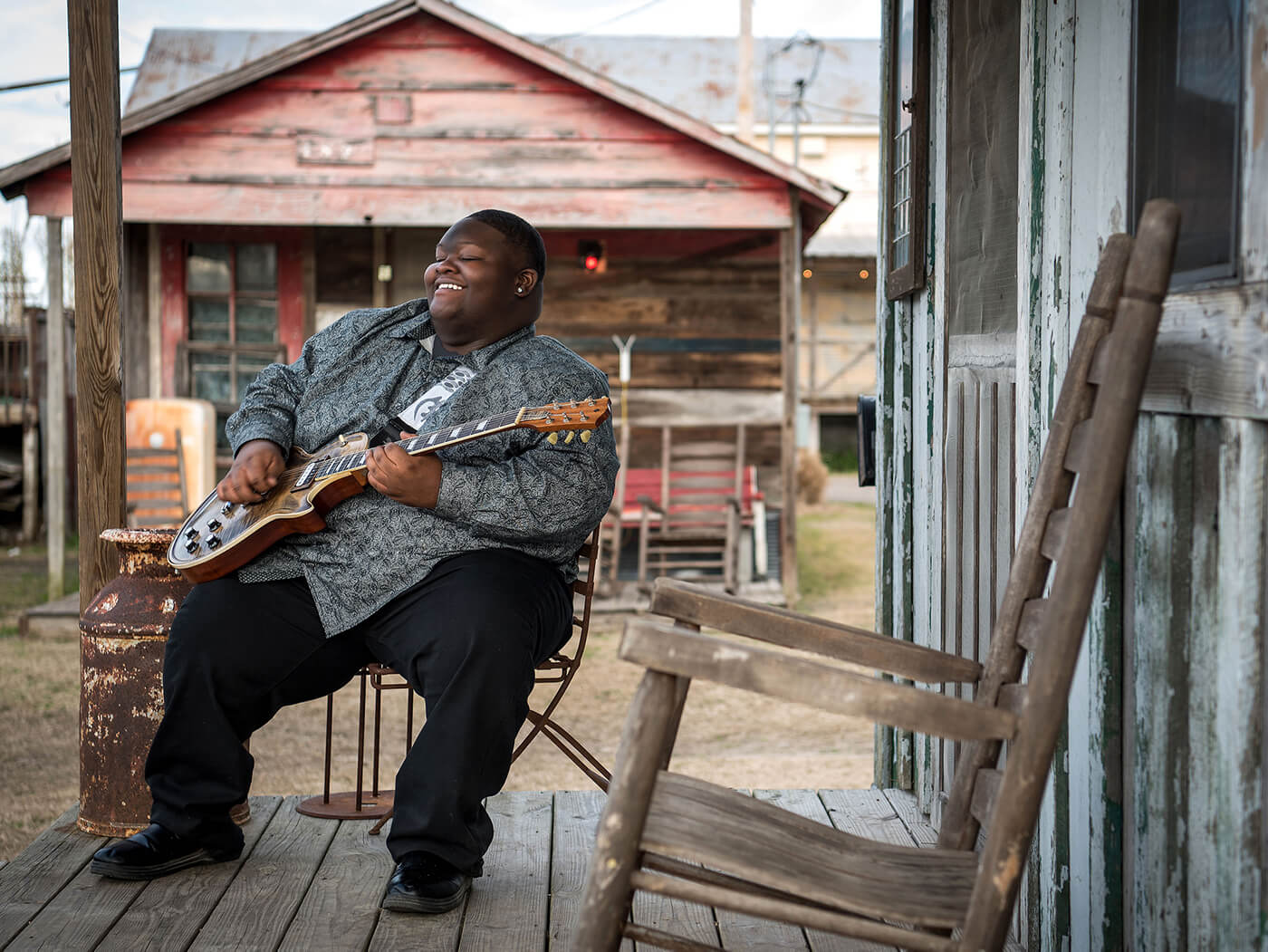
You were a shredder? What reined you in?
Listening to all the lectures I was getting from all the OGs! That, and looking at people’s comments and stuff like that. I was getting a lot of, “Man, you’re good, but you need to slow down.” Even players who played fast were telling me to slow down! I counted it as [constructive] criticism. You can never stop learning, so I took their knowledge and applied it to what I do.
So what do you think a guitar solo should do within the context of a song?
I remember Bob Margolin – he played a lot with Muddy Waters – saying that during that first round, you should make a statement and take the crowd on a journey, and that second round, you go in and really do your due. So I think that’s the big thing. You must take the crowd on a journey. It goes back to the shredding thing. You can’t just lay it on them. You’ve got to build it up and take them there with dynamics and such.
Do you have a practice ritual?
It’s not like a routine or anything. I just pick up the guitar and start playing. Sometimes I play to backing tracks, or I might put on a certain song and see if I can do something to it, play to it, but that’s pretty much it. I practice on electric and acoustic. I plug in electric when I’m using my tracking rig at home, and sometimes when I need to test a pedal, I plug into my amp. But I practice on acoustic as well because it’s very cool and peaceful.
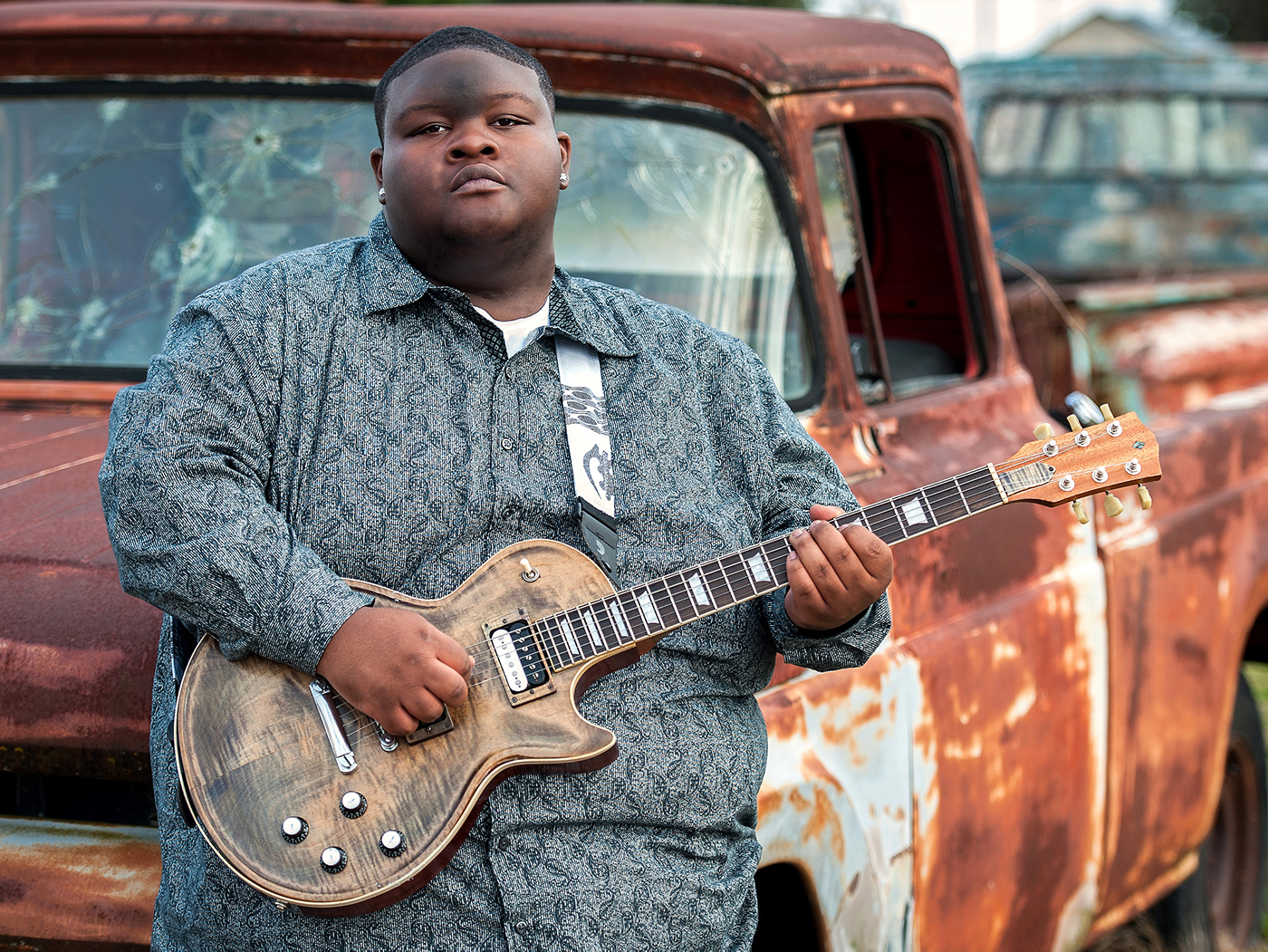
The gear
Your Mike Chertoff Custom has been your number one guitar since 2016. How did that come about?
In 2015, when a video of me went viral, I started getting a lot of different companies coming at me and sending me stuff. Mike Chertoff was one of those who contacted me, and I liked what he was doing. He kept saying, “I’m going to send you a guitar one day, man!” He had that LP-style guitar built already, and he finished it for me and sent it to me a week before I had to play in Germany. I loved it. That’s what got me back into LPs, and it has been my number one ever since.
What do you look for in a guitar?
For one, it’s got to have weight. I’m a big dude, and if I play something light, I don’t want to break it. I’m hard on instruments, so it has to have weight, and the neck has to be wide, and that [Chertoff] guitar had all the qualities. It’s beefier than Strats and Teles, and that’s a sound that I’m drawn to. The Teles are more trebly. I want that when I’m playing for quiet moments, when I’m playing clean or light or really funky. I play funk stuff as well, and that’s when I bring the Strats and Teles out.
You also play acoustic guitar. What do you play, and how is that a challenge for someone who’s “hard on instruments”?
I’ve been playing a Gibson J, and I have a few Fender acoustics as well. But as far as getting control, that’s the thing about an acoustic guitar: it will tell off on you, and it disciplines you, and that’s what it has been doing to me for a while now. I’m learning to control it.
You’re a dedicated Peavey man. What do you like about their amps?
The first amp I ever got was a Peavey. My dad bought it from a pawnshop, so I’ve known about Peavey for a long time. Peavey is, of course, Mississippi-made, and it has a sound that when I hear it, makes me think of Mississippi. It’s a very warm tone. I like a very clean tone, and I use my pedals for the dirty. Peaveys don’t break up a lot, and I love that. By the end of the night, my volume is turned up. On the pedals, I have [them] turned really high, but with the amp, when I start out, it’s at 4 or 5, and then it just starts increasing!
What were the recording sessions for Kingfish like for you? Are there certain ways you like to track your guitars?
I’ve always liked putting a baffle on my amp. I had studio experience, but this was the second time in my life that I was actually going in the studio and recording something for me, so I was a little bit nervous. It took us three days on the music and one day on all the vocals, and a whole lot of overdubbing because I like to overdub my solos. But there are a few songs where the solos are from the live takes. Before I’m Old and Believe These Blues are live takes.
What else did you use on the album, and what’s in your live rig?
I used a Peavey Delta Blues 210 and a Fender Twin. I used my Chertoff Custom because I wasn’t playing Strats at the time. I used a Goldtop Les Paul on some of the solos. For pedals, I used the EWS Brute Drive and I was stacking it with an Ibanez Tube Screamer, and I used a Klon Klone as well.
Live, I use a Peavey Delta Blues 210 or a Peavey Classic or any Fender Twin, and I use an MXR Sugar Drive, a Mini Cry Baby Wah with a Boss Tuner, I’m just starting back to adding delay, a Way Huge Aqua Puss, Pig Hog cables, my Strats, and my Chertoff Custom.

How did the collaboration with Fender on their Vintera range come about?
I’ve long played and been a fan of Fender guitars and was thrilled when they asked me to be a part of their Vintera Series launch. The Fender team is committed to supporting guitarists and they have been a pleasure to work with on this exciting, new campaign.
Lastly, because everyone has their own definition of ‘tone’ – what’s yours?
How you sound, how pleasing it is to your ears. I’m drawn to a beefier, fatter, Gary Moore type of thing. Before that, I was into lighter tones. I was using the bridge pickup on the Strat and I was turning the tone up in my pedals, so who knows – in the future, I might go back to the lighter things. It’s all about what you’re comfortable with.
Kingfish’s debut self-titled album is out now on Alligator Records.

